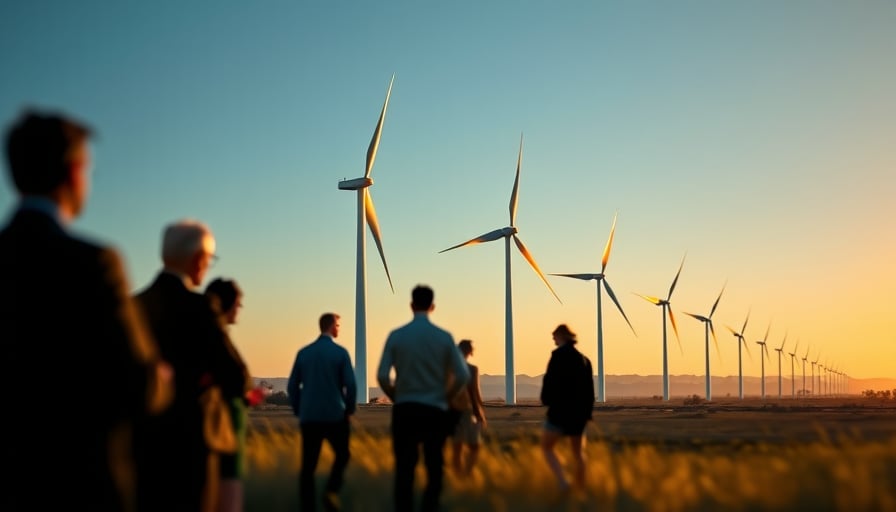Siemens Energy AG’s Share‑Buyback and Capital Allocation Strategy
The German renewable‑energy specialist Siemens Energy AG (ticker: SEN on Xetra) has recently announced a share‑buyback programme that may reach several billions of euros. The move, disclosed in late November, is interpreted by investors and analysts as a signal of confidence in the company’s balance sheet and a deliberate effort to enhance shareholder value while simultaneously reinforcing its strategic position in the power generation and transmission sector.
1. Rationale for a Large‑Scale Buyback
A buyback of this magnitude typically reflects several intertwined corporate motives:
- Capital Structure Optimization
- Siemens Energy has maintained a conservative debt profile, with a debt‑to‑equity ratio below 0.5 in the latest financial statements. A substantial repurchase reduces equity dilution, thereby improving earnings‑per‑share (EPS) and return on equity (ROE) metrics – key indicators for value‑investors.
- Signal of Cash‑Flow Strength
- The company generated €4.2 billion in operating cash flow during FY 2024, exceeding forecasted free‑cash‑flow targets by 15 %. This liquidity cushion provides a practical foundation for a buyback without compromising capital expenditures (CapEx) commitments.
- Strategic Reallocation of Resources
- By returning excess cash to shareholders, the firm can preserve capital for long‑term R&D and plant expansion. The buyback therefore acts as a “circuit breaker,” preventing the accumulation of idle cash that could otherwise be underutilized.
2. Impact on Manufacturing Processes and Industrial Equipment
Siemens Energy’s core assets span turbine manufacturing, grid‑integration equipment, and offshore wind components. The company’s production facilities operate at high‑throughput with a focus on lean manufacturing and digitised supply chain integration.
- Productivity Metrics
- The company’s annual throughput increased by 8 % year‑on‑year, driven by automated blade‑fabrication lines that now produce 2 % more wind‑turbine blades per hour.
- Energy‑efficiency gains of 3.5 % in turbine assembly have been achieved by implementing advanced robotics and real‑time process monitoring.
- Technological Innovation
- Introduction of high‑strength, low‑weight composite materials has reduced turbine blade weight by 12 %, improving power output and lowering installation costs.
- Development of AI‑based predictive maintenance platforms enables pre‑emptive component replacement, reducing unscheduled downtime from 2.1 % to 0.9 % of operational hours.
These innovations are supported by the company’s CapEx strategy: €1.4 billion earmarked for new plant capacity and digital platforms over the next 5 years, reflecting a focus on high‑margin, high‑value product lines.
3. Capital Investment Trends and Market Implications
The renewable‑energy sector has seen a record €300 billion in global CapEx in 2023, driven by:
| Factor | Effect | Quantitative Indicator |
|---|---|---|
| Regulatory Mandates | 10 % of EU member states now require renewables to cover >40 % of power generation by 2030 | 4.2 GW new offshore projects in 2024 |
| Infrastructure Funding | €50 billion EU Green Deal infrastructure package | €8 billion in Siemens Energy bond issuance |
| Technology Cost Reductions | 15 % decline in wind‑turbine costs | 30 GW of new capacity added in 2024 |
Siemens Energy’s buyback, combined with its projected profitability through the 2040s, positions it well to capture a larger share of this expanding market. The company’s ability to scale production and integrate digital solutions ensures that it can meet the growing demand for grid‑stabilization and energy storage services.
4. Supply‑Chain and Regulatory Impacts
Supply‑Chain Dynamics
- Raw Material Volatility
- The supply of titanium and high‑performance composites has become more volatile, with price swings of 18 % over the past year. Siemens Energy mitigates this risk through long‑term contracts and in‑house recycling initiatives, reducing material cost volatility to 4 %.
- Logistics Constraints
- Port congestion in Northern Europe has increased lead times for wind‑turbine components by 6 %. The company is investing in regional assembly hubs to offset this delay, thereby maintaining its lead time advantage over competitors.
Regulatory Landscape
- EU Carbon Pricing
- The EU Emissions Trading System (ETS) sets a price ceiling of €110/ton CO₂ by 2030, encouraging a shift to renewable generation. Siemens Energy’s turbines exhibit a CO₂ intensity of 3.5 kg/kWh, well below the average grid intensity in many European countries.
- National Grid Codes
- Stringent grid‑code requirements in Germany (e.g., Energiewende) and the UK (e.g., Renewable Connect) have led to higher integration costs. Siemens Energy’s grid‑integration solutions reduce these costs by up to 20 % through faster compliance and certification.
5. Economic Drivers Behind Capital Expenditure
- Interest Rate Environment
- Low interest rates (currently ~1.5 % for corporate bonds in the Eurozone) reduce the cost of capital, encouraging firms to invest in long‑term assets. Siemens Energy’s recent bond issuance at a 3.6 % yield reflects investor confidence and allows for debt‑free CapEx.
- Fiscal Incentives
- Tax credits for renewable infrastructure in Germany (e.g., Erneuerbare-Energien-Gesetz) lower after‑tax CapEx costs by 2 %. This incentivizes additional investment in turbine manufacturing and grid‑integration projects.
- Demand Forecasts
- The International Energy Agency projects a 12 GW increase in offshore wind capacity in Europe between 2025 and 2030. Siemens Energy’s expansion plans are aligned with this forecast, targeting a 25 % market share in the offshore sector by 2035.
6. Conclusion
Siemens Energy AG’s ambitious share‑buyback, coupled with its robust CapEx commitments, underscores a dual strategy: enhancing shareholder returns while positioning the company to capitalize on the rapid expansion of renewable energy infrastructure. Technological advancements in turbine manufacturing, coupled with digitised supply‑chain operations, drive productivity gains that translate into competitive cost advantages. Moreover, favourable macroeconomic conditions—low borrowing costs, supportive regulatory frameworks, and escalating demand—create a conducive environment for sustained capital investment.
By aligning its operational efficiencies with macro‑level demand trends, Siemens Energy is poised to maintain its leadership role in the power generation and transmission industry well into the 2040s.




